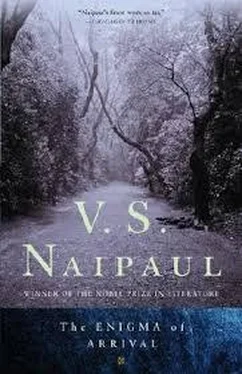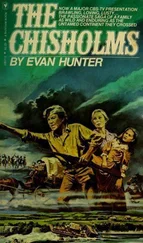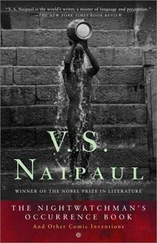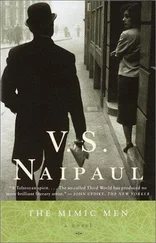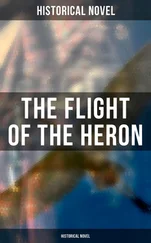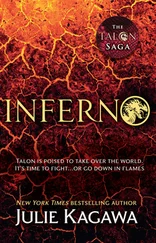V. Naipaul - The Enigma of Arrival
Здесь есть возможность читать онлайн «V. Naipaul - The Enigma of Arrival» весь текст электронной книги совершенно бесплатно (целиком полную версию без сокращений). В некоторых случаях можно слушать аудио, скачать через торрент в формате fb2 и присутствует краткое содержание. Год выпуска: 2012, Издательство: Picador, Жанр: Современная проза, на английском языке. Описание произведения, (предисловие) а так же отзывы посетителей доступны на портале библиотеки ЛибКат.
- Название:The Enigma of Arrival
- Автор:
- Издательство:Picador
- Жанр:
- Год:2012
- ISBN:нет данных
- Рейтинг книги:3 / 5. Голосов: 1
-
Избранное:Добавить в избранное
- Отзывы:
-
Ваша оценка:
- 60
- 1
- 2
- 3
- 4
- 5
The Enigma of Arrival: краткое содержание, описание и аннотация
Предлагаем к чтению аннотацию, описание, краткое содержание или предисловие (зависит от того, что написал сам автор книги «The Enigma of Arrival»). Если вы не нашли необходимую информацию о книге — напишите в комментариях, мы постараемся отыскать её.
The Enigma of Arrival — читать онлайн бесплатно полную книгу (весь текст) целиком
Ниже представлен текст книги, разбитый по страницам. Система сохранения места последней прочитанной страницы, позволяет с удобством читать онлайн бесплатно книгу «The Enigma of Arrival», без необходимости каждый раз заново искать на чём Вы остановились. Поставьте закладку, и сможете в любой момент перейти на страницу, на которой закончили чтение.
Интервал:
Закладка:
I didn’t go to see her. I didn’t telephone her. It would have been physically hard for me to go to where she was. And her disturbance, her instability — which perhaps had always existed and which perhaps as an ardent young man I couldn’t see, preferring to see the shape and color of her mouth — her instability, created no doubt by the terrible war and then her time in a London which she could hardly have understood, that was too unsettling to me. I preserved my own balance with difficulty.
I was also deep in a book. My thoughts were of a whole new generation of young people in remote countries, made restless and uncertain in the late-twentieth century not by travel but by the undoing of their old certainties, and looking for false consolation in the mind-quelling practices of a simple revealed religion. Angela took me back to the past. I wasn’t living there, intellectually and imaginatively, any longer. My world and my themes had come to me long after I had ceased to write of Angela.
Her letter was soon covered over by the paper that accumulated in various piles in various places in my cottage. After some months it would not have been possible for me to get at it easily. She never wrote again.
IVY
I NEVER spoke to my landlord. And in all my years as his tenant I saw him — or had a glimpse of him — only once. (There was another glimpse; but that was even briefer, was from a distance, and was of his back.) The true glimpse came on the public road one afternoon, at the end of my walk; and I was so little prepared for it, and it was so brief, that I couldn’t say afterwards what my landlord looked like.
That day I hadn’t done the walk up the lark hills to the barrows and the closer view of Stonehenge. I had done the other, shorter walk, on flatter ground. At the farmyard at the bottom of the hill I had turned down the wide straight stretch of the droveway, bisected for some time now by the barbed-wire fence.
It was there, down the free part of the wide way, that I had seen Jack driving back early one Sunday afternoon after his midday drinking at the pub, bumping and banging along in his old car, plowing through the tussocky grass like a launch in choppy water. And it was along that way that on the Christmas Saturday before he died he had driven his car twice, once out, once back, to have his last evening with his friends in the pub.
On the barbed-wire fence there were still the shredded remains of one or two of the plastic-sack paddings Jack’s father-in-law had rolled at his crossing places. And at intervals down that way there were the older relics Jack would have known. On one side, the empty, abandoned gray beehives set down in the grass in two crooked rows; on the other side, in the shade of bush and silver birch, the abandoned gypsy caravan with its cambered roof and variegated colors, the caravan itself still appearing in working order. Further on, on that same side, past the young wood, there was the old hayrick shaped like a cottage and covered with the black plastic sheeting that had over the years grown ragged at the edges, had lost its shine and its ability to crackle, and had thinned and weathered to a texture like that of a faded rose petal or the skin of a very old person. Beyond that, the mysterious house ruin, all walls, with a boundary line of sycamores that had grown tall, those regularly spaced sycamores now like part of the mystery of the place. When they were planted, and for many years afterwards, the seedlings or saplings would have seemed far apart and would have made no impression in the wide way. Now the crowns of foliage on the sturdy trunks met and cast a solid cold shade in which even in the hottest summer no grass could grow; the earth, though flinty, was always damp and black around that ruin, like ground trodden on by sheep.
The straight stretch of the droveway ended in an abrupt bare slope marked with lines and welts and indentations that suggested old agriculture or old fortifications. The way itself curved, to run beside this slope, which, though not high, shut out a further view and led the eye up to the sky. Nothing now on that striated, antique hillside; hardly pasture. Only a water trough, no grass around it, the flinty soil trampled into black mud. From time to time steers (on the upper slope outlined against the old sky) were penned there, blank, healthy, heavy-bellied, responsive to every human approach, waiting now only for the covered trailer and the trip along the winding valley road to the slaughterhouse in the town.
On the other side of the way there was a wide tilled field that led gently up to a wood. The tilling of such flinty soil (and the flints could be big and heavy) was new. I had been told that it had started only during the war, when the discovery was made that (in addition, of course, to fertilizer) ground like that needed to be merely scratched rather than deeply plowed. In the wood at the top were reared pheasants for shooting, pheasants which, when grown, wandered all over the valley. It was in that wood that I had gone walking during my very first week in the valley and, in a muddy lane overhung with trees I had later learned to be blackthorn, I had met Jack’s father-in-law.
The droveway here was deeply rutted, tall grass growing in tufts on the ridges, the ruts themselves narrow and bare and flinty, with loose gravel. Hard to walk on; ankle-turning.
On this path one day — during my first or second year, when hares still delighted me, and I looked for them during every walk — I had seen the dusty, ragged, half-rotted-away carcass of a hare. The area was famous for its hares; a traveler in the previous century, William Cobbett, had once seen, not far away from here, a field full of hares. And there were still hare shoots — curiously feudal occasions in one way, with hired beaters driving the animals over the downs towards the shooters, hidden behind bales of hay on the droveway; and at the same time occasions on which landowners and laborers and men from the small towns round about were at one, united by old country instincts. Perhaps the hare had been shot during one of those shoots; perhaps the wounded animal had been mangled and dragged out to the droveway by a dog. Dead and soon useless, soon less than carrion, it had perhaps been turned over inquisitively by a farm worker or a walker, kicked or pushed along a deep rut and left finally to dry and molder away.
What mighty hind legs! Folded in death. (Such a skeleton, or something that reminded me of it, I saw again more than ten years later on a high rocky islet midway in the narrow channel between southwestern Trinidad and Venezuela. This was an islet of pelicans and frigate birds, but pelicans above all. Here pelicans lived and also died. In the central dips of the islet the ground was springy with guano; and on the rock ledges there were whole pelican skeletons, as though, knowing themselves to be in their sanctuary, the big birds had folded their powerful wings and settled down to die. The pelican bones on that islet — called by the Spaniards Soldado, “the soldier,” and afterwards by the English Soldier’s Rock — looked like the strong hind legs, bones within dusty fur, of that hare.)
The antique, bare slope at one side of the droveway receded and became high and steep, so that there was something like a field or paddock on that side of the droveway. There was a pond in this field; and at various points down the high, steep slope trees had been planted. The inexplicable little pond, the abruptness and height of the slope, the scattered trees — the land here had a feeling of oddity, ancientness, even sanctity.
The elms in the paddock or field at the foot of the steep slope had all been cut down — like the elms all over the valley — and showed now only as level stumps sawn off about a foot or so above the ground. There were one or two horses in the paddock. Unbridled, broad-backed, with muzzles perhaps a little too sloping, they looked heavy, primitive animals, and as emblematic as everything else in that setting: the pond, the paddock, the elm stumps, the steep green slope with the scattered trees, each tree casting a perfect shadow. As though, as in a primitive painting, every element here had to be perfectly realized, separately realized. In the very simplicity and clarity of the view there was a kind of mystery: it linked neither to the bare downs to which it led in one direction, nor to the lush river vegetation, the water meadows, to which it led in the other direction.
Читать дальшеИнтервал:
Закладка:
Похожие книги на «The Enigma of Arrival»
Представляем Вашему вниманию похожие книги на «The Enigma of Arrival» списком для выбора. Мы отобрали схожую по названию и смыслу литературу в надежде предоставить читателям больше вариантов отыскать новые, интересные, ещё непрочитанные произведения.
Обсуждение, отзывы о книге «The Enigma of Arrival» и просто собственные мнения читателей. Оставьте ваши комментарии, напишите, что Вы думаете о произведении, его смысле или главных героях. Укажите что конкретно понравилось, а что нет, и почему Вы так считаете.
